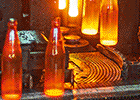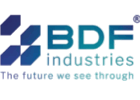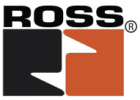When glass components need to be tracked and documented in a production cycle, that's where the laser marker comes in. It can mark directly on the glass without the need for additional materials. With optional "marking on the fly" technology, this process is exceptionally fast.
Laser marking of metals and plastics has been widely used in industry for some time because permanent marking allows product tracking throughout the production cycle and, ideally, throughout the product life cycle. However, this technology hasn't gained much traction in the glass industry due to the unique challenges glass presents during processing. Existing solutions have often provided unsatisfactory quality results or have been costly to purchase and operate. To address this, the c-mark" marking module was introduced last year. It can be used wherever high quality marking is required or where intellectual property issues are an issue, such as safety glass marking, automotive, medical, jewelry and perfume industries. c-mark is suitable for both slow and fast production lines, and with the now optional „Marking on the Fly" technology, processing times are significantly reduced.
New interface:
The manufacturer recently developed an MQTT interface for connecting to external systems, such as ERP systems and automated production environments. This enables seamless tracking and documentation of glass components throughout the entire production process and, in the future, potentially throughout their entire life cycle. c-mark has also been complemented by a corresponding reading unit that allows for easy capture of laser-marked QR codes, barcodes, etc., and enables graphical/textual representation or electronic processing of the captured data. This will lead to the development of a cloud-based database solution in the future, allowing for IoT or Industry 4.0 integration and creating additional value for customers.
Advantages of cericom c-mark:
• Permanent marking of all types of glass, especially safety glass
• High-speed: Letters, numbers, logos, and machine-readable codes are transferred to the glass in seconds
• Environmentally friendly and cost-effective
• No use of consumables: Direct glass marking
c-mark allows for easy and quick integration into existing machinery and equipment and is also available as a "stand-alone solution."
What are the components of the c-mark system and how can it be integrated into production?
cericom c-mark consists of a marking module with a laser, 2D galvo scanners and a focusing lens, optionally available with variable focal lengths. A special adapter plate allows easy and flexible integration of the laser marking module into existing equipment, simplifying maintenance and replacement. The rotatable laser scan head provides variable laser beam output, allowing overhead processing when needed.
A control cabinet and application-specific software are also available. Cable connections suitable for drag chains ensure a robust connection of the laser marking module and secure data transfer.



























